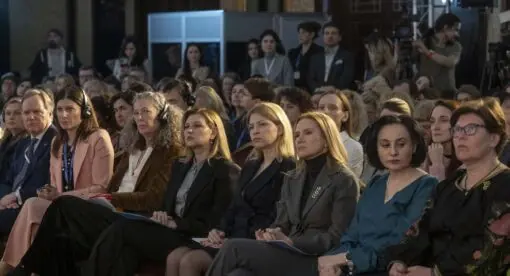Executive Summary
The U.S. Department of Defense (DoD) and the Joint Force are not taking the threat of rigid masculine norms seriously enough. The Women, Peace, and Security (WPS) agenda and the integration of women into combat roles have become important elements in the DoD’s efforts to improve operational effectiveness and unit cohesion. However, the reticence to talk about masculinities and male trauma fails to account for how harmful gender norms shape military policy and culture – impacting the safety and wellbeing of all Service members.
As the threat of nuclear war in Ukraine increases and tensions with China continue to mount, the modern security landscape is exerting outsized pressure on the DoD to shore up its response to poor troop maintenance, including issues with recruitment and retention. Notably, metastasizing internal health crises that also harm men, including astronomical rates of suicide, drug and alcohol use, and sexual assault, threaten the stability of force readiness. An analysis of U.S. military culture that focuses on power dynamics and attitudes around manhood can help to make the connections between issues with force readiness and the gendered components of trauma, culture, and mental health.
Within the U.S. military, rigid masculine gender norms that exalt stoicism and devalue emotionality – due to fear of being perceived as weak – often inhibit men’s ability to properly cope with trauma. The heightened pressure to appear unaffected by traumatic events and limited access to critical health services such as psychologists and counselors can result in a lack of help-seeking behavior and an increased likelihood to perpetrate violence, particularly for men. Military constructions of gender have deleterious effects not only on the individual health and well-being of Service members and veterans but also on the military’s ability to recruit and retain personnel.
Despite progress in recent years to address gender-related issues in the military, including the Independent Review Commission on Sexual Assault in the Military investigations into sexual assault and harassment in the force and implementation of WPS mandates, such approaches too often are just a temporary solution. Investments into masculinities-informed gender analysis that unearths the root causes of violence serve to counteract the denial and neglect of men’s mental health and psychosocial needs. Today’s geopolitical realities and the cultural challenges of Department and Joint Force internal culture necessitate a comprehensive structural response within the DoD that broadens the conception of gender in security beyond “women’s issues.”
Key Takeaways:
- Widely held gender norms that shape men’s beliefs around what it means to be a man – including aggression, physical dominance, and heroism – are central to many interpretations of masculinity. While these norms and values can differ across time, culture, and context, certain assumptions of manhood are central features to militaries globally.
- The pressure to perform in high-stress environments, such as during special forces training, results in many Service members, often men, turning to substance use as performance enhancers to meet physical demands or as a palliative for trauma or injury.
- Tens of thousands of active-duty personnel and veterans who have served in the military since 9/11 have died by suicide. Mental health, PTSD, and access to psychosocial support have an immediate effect on military recruitment. Data released in 2021 suggested that almost one-third of potential recruits were worried about potential sexual assault if they joined the military, while stark rates of suicide continue to send shockwaves throughout service communities and beyond.
- There is a growing recognition among academia, international organizations, and civil society of the critical links between misogyny and radical extremism in the military – which are not being adequately addressed by the DoD.
- The Department of Defense briefly referenced the need to consider masculinities in the Independent Review Commission on Sexual Assault in the Military. An upcoming Suicide Prevention and Response Independent Review Committee must have a rigorous gender analysis with a masculinities approach to effectively address suicide in military and veteran communities.
Key Policy Recommendations:
- Carry out the recommended research as laid out in the Independent Review Commission Recommendations on Countering Sexual Assault in the Military.
- Conduct a thorough gender analysis on the upcoming Suicide Prevention and Response Independent Review Committee currently being carried out at DoD.
- Conduct a gender analysis with a clear masculinities approach on all high-level policy documents related to national security and defense policy.
- Provide deeper and more sustained investment in mental health services and resources for Service members, including greater availability of counselors and psychologists.
- Include a masculinities approach in DoD efforts to affect positive internal cultural change in order to encourage men’s help-seeking behavior and shift norms around mental health stigma.







